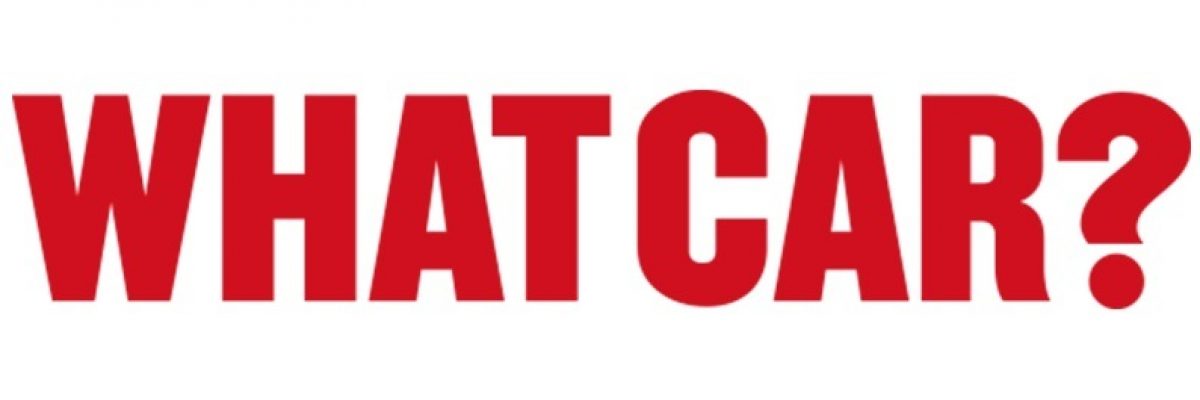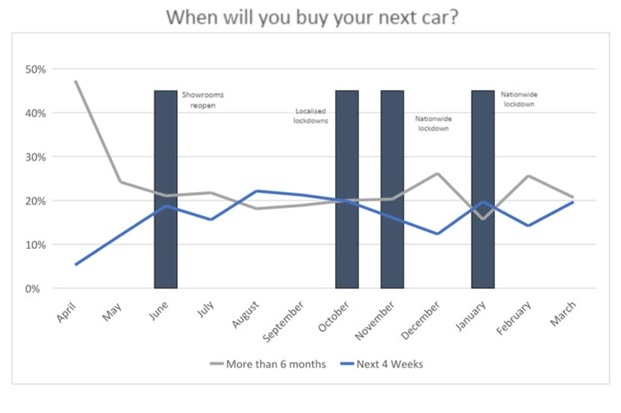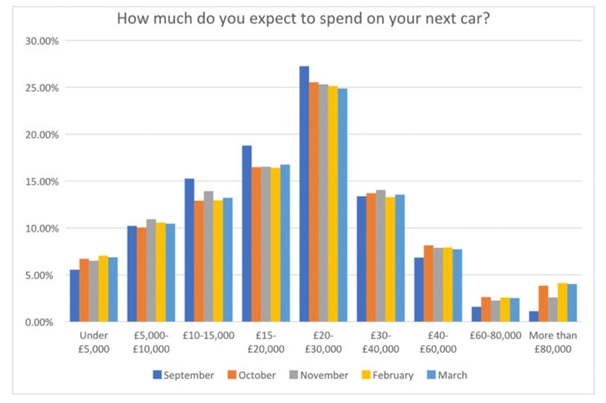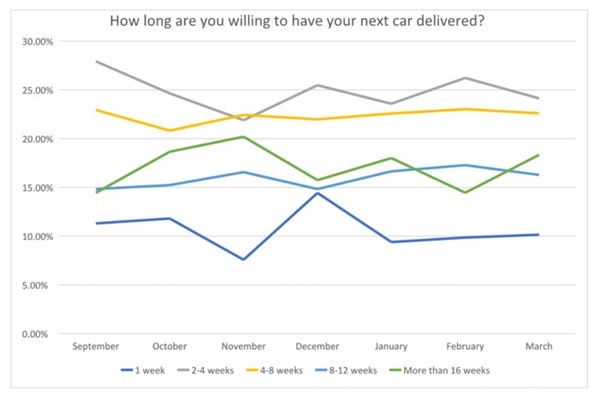
This week marked 12 months since the UK first went into lockdown and What Car? has looked back at how some of the key measures have fluctuated over the past 12 months.
The results contain responses from 206,717 in-market car buyers, with an average weekly response rate of more than 4300 respondents.
Buyer timeframes
One measure of demand is how soon in-market buyers are looking to purchase their next car. At the beginning of April last year, on average just 5% of in-market buyers were looking to purchase in the next four weeks, while 47% said they were looking to buy in more than six- months’ time.

As we moved closer to June, consumer confidence grew. From 1 June, when showrooms could reopen, a growing number of buyers were considering a new car purchase within four weeks, while the share of buyers looking to buy in more than six months declined.
From October, localised lockdowns became more prevalent and What Car? began to see a dip in the short-term buyer timeframes. However, by this time online platforms had become more prevalent, and confidence in digital buying was high. What Car?’s survey in October found that 35.15% would be comfortable buying their next car entirely online; this may explain why subsequent lockdowns didn’t see an equivalent decline in buyer timeframes, with buyers now able to go online to complete the purchase of their next vehicle.
What is evident from What Car?’s research is that each of the lockdowns has influenced buyer timeframes, which in turn impacted car sales.
Budget
While buyer timeframes were clearly influenced by lockdowns, societal restrictions had less of an effect on budgets. In a recent, March 2021 survey, 79% of 1028 in-market buyers said that Covid-19 has not changed how much they are looking to spend on their next car. While 15% said they will now spend less on their next vehicle, 6% told What Car? they will actually spend more.
In terms of how much buyers are expecting to spend on their next car, budgets have remained consistent throughout the pandemic with the majority of buyers looking to spend £20,000 – £30,000 on their next vehicle.

Vehicle delivery expectations
Another key metric was delivery times – how soon buyers wanted their vehicle delivered. From September to March the majority of buyers was aiming to have their car within two months of placing an order.
The nationwide lockdown imposed in November saw a small spike in the number of buyers wanting their next car delivered within a week, presumably in anticipation of showrooms closing once more.

Key lessons
One of the key lessons from the past 12 months is the severe impact that lockdowns have had on both buyer confidence and activity. Though online channels have helped meet the most urgent consumer demand in recent months, lockdowns have resulted in a fall in the share of buyers looking to purchase in the short run, pushing back sales to a point when showrooms can reopen.
What Car?’s research in February this year found that 95% of buyers believe showrooms can be operated in a Covid-safe manner, with the same percentage happy to visit when restrictions allow them to do so. Showrooms reopening in April will likely be met with pent-up demand once more affecting the market.
The good news is that Covid-19 has had less of an impact on buyers’ budgets and vehicle choice than some have feared, suggesting that, once showrooms can reopen, dealers can look forward to a period of relative normality. Maintaining healthy stock will be important because the majority of buyers will want to have their next vehicle within two months of placing an order.
For the full article, visit here
